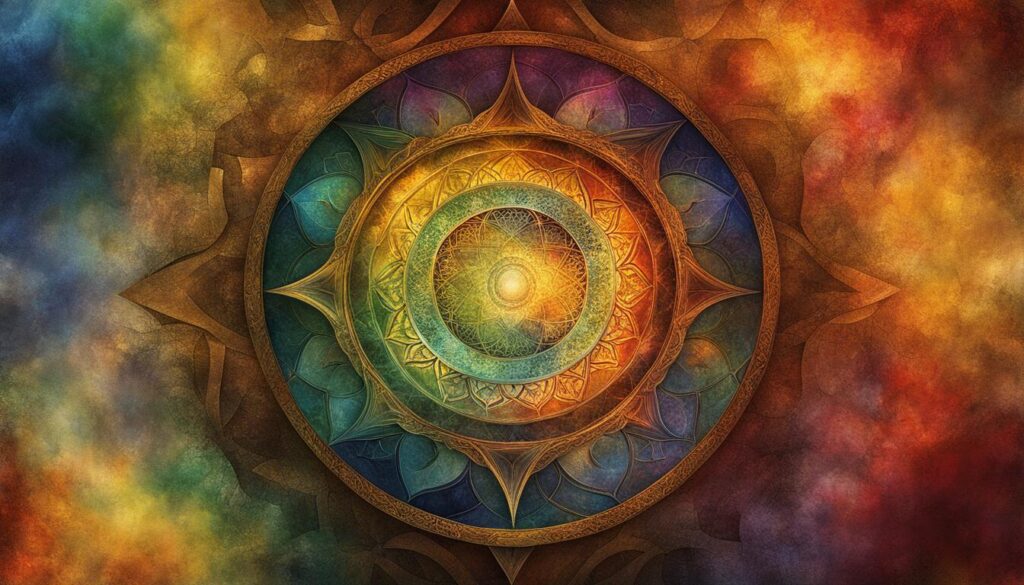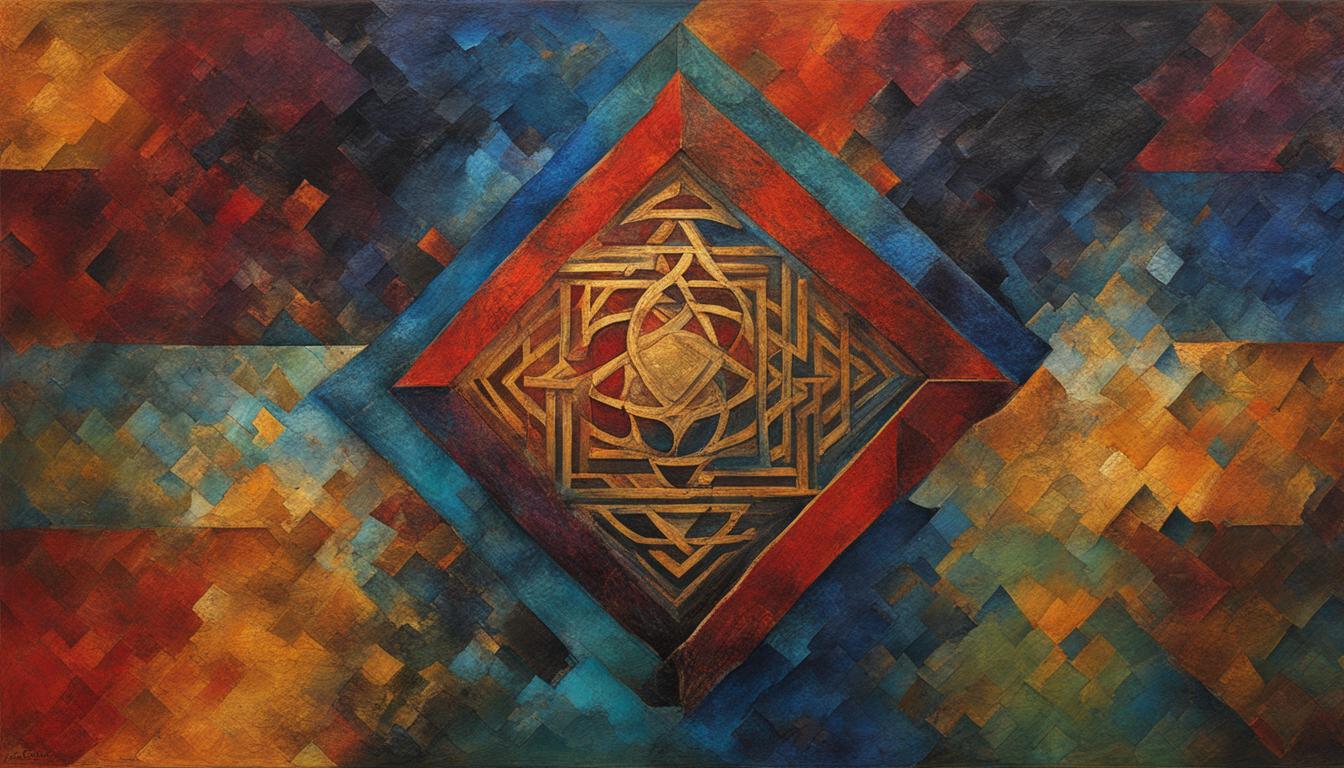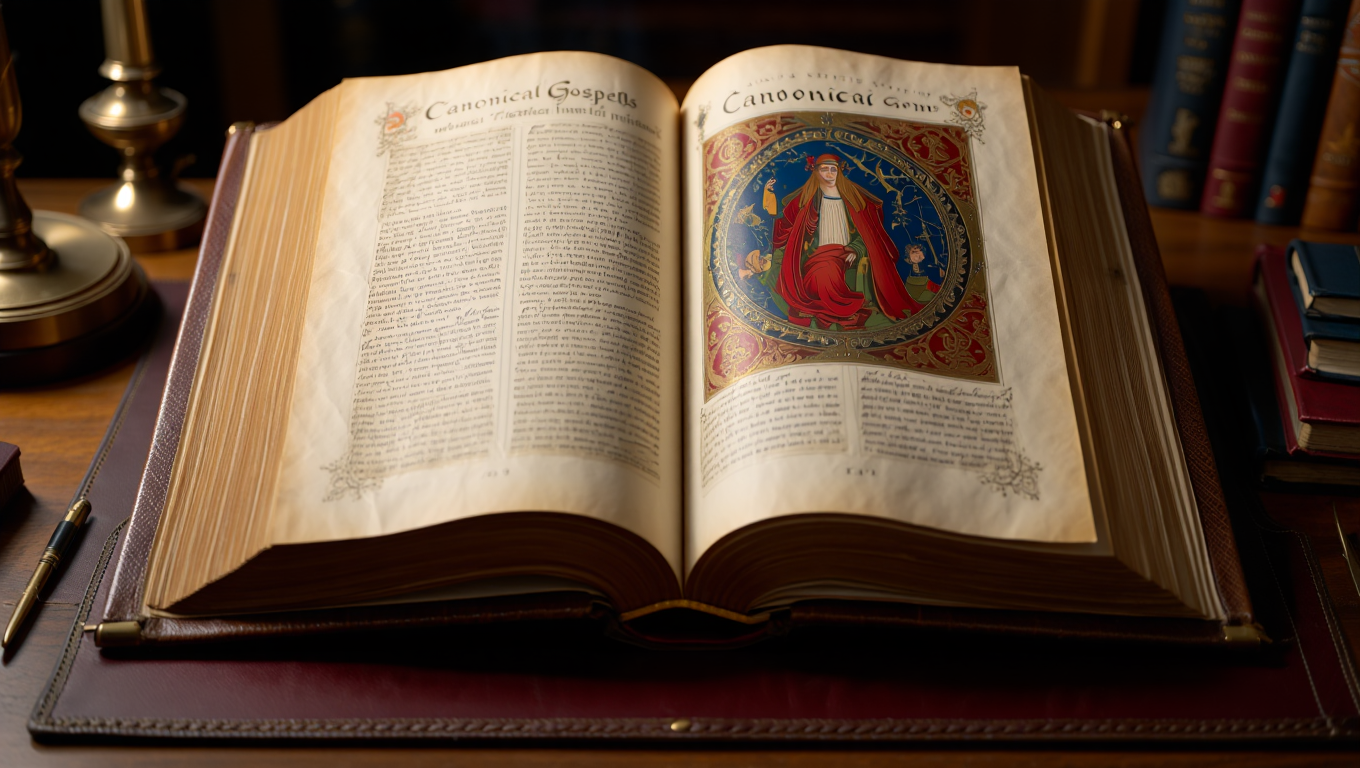The Kabbalistic Zohar and the Talmud are two significant texts in Jewish tradition, each with its unique focus and content. Understanding the differences between these two works can deepen our knowledge of Jewish mysticism and legal teachings.
The Zohar, a collection of books and sections, is the central work in the literature of the Kabbalah. It delves into mystical aspects and spiritual interpretations of the Torah, offering profound insights and guidance. On the other hand, the Talmud is a vast compilation of Jewish law, teachings, and debates. It covers a wide range of topics, including civil and criminal law, ethics, theology, and ritual observance.
While the Zohar emphasizes spiritual growth and mystical interpretations, the Talmud focuses on legal and ethical matters. The Zohar presents allegories, narratives, and symbolism to convey its teachings, while the Talmud offers practical rulings, discussions, and debates. These differences make the Zohar and the Talmud complementary aspects of Jewish thought, catering to different aspects of Jewish life and practice.
Key Takeaways:
- The Zohar is the central work in the literature of the Kabbalah, focusing on mystical interpretations of the Torah.
- The Talmud is a vast compilation of Jewish law, teachings, and debates, covering a wide range of topics.
- The Zohar emphasizes spiritual growth and mystical insights, while the Talmud focuses on legal and ethical matters.
- The Zohar presents its teachings through allegories, narratives, and symbolism, while the Talmud offers practical rulings and debates.
- Understanding the differences between the Zohar and the Talmud enriches our understanding of Jewish tradition and thought.
Literary Form and Content of the Zohar
The Zohar, being a collection of books, exhibits a specific literary form and content that sets it apart from other religious texts. It is not a single book but rather a compilation of various sections and books, each offering unique insights and interpretations of the Torah. The Zohar is arranged according to the weekly portions of the Torah, providing a comprehensive exploration of mystical and spiritual dimensions.
Written mainly in Aramaic, the Zohar incorporates commentaries on verses from the Prophets and Hagiographa, expanding upon their meanings and offering profound insights. Its content encompasses not only direct interpretations of the Torah but also narratives, legends, and allegories. The Zohar often digresses from the literal text, using rich symbolism and imaginative storytelling to convey its spiritual teachings.
With its unique literary form and content, the Zohar stands as a fascinating body of work that delves into the mystical aspects of the Torah, offering readers a deeper understanding of spiritual truth and the interconnectedness of all things.
| Literary Form | Content | |
|---|---|---|
| Zohar | Collection of books and sections | Mystical interpretations of the Torah, commentaries, narratives, allegories |
| Talmud | Compilation of discussions and teachings | Legal and ethical matters, debates, practical rulings |
Authorship and Origins of the Zohar
The authorship of the Zohar, one of the central works in the literature of the Kabbalah, has long been a subject of debate. The book was first publicized by Moses de León, a Spanish Jewish mystic who claimed that it was the work of the tanna (Mishnaic sage) Simeon b. Yoḥai. However, many modern scholars believe that de León himself wrote the Zohar between 1280 and 1286.
There are several theories regarding the origins of the Zohar. Some scholars argue that it is a compilation of multiple authors spanning different time periods. They suggest that the Zohar contains both genuine ancient material and later additions from de León and other contributors. Others believe that de León was the sole author and that he used the persona of Simeon b. Yoḥai to lend authority to his work.
The language and style of the Zohar also provide clues about its origins. The Zohar is written in an artificial dialect based on the Babylonian Talmud and Targum Onkelos, indicating that it was likely composed during the period of the Geonim (6th-11th centuries). Despite the ongoing scholarly debate, the Zohar remains a significant text in Jewish mysticism, revered for its spiritual insights and teachings.
Table: Theories on the Authorship and Origins of the Zohar
| Theories | Description |
|---|---|
| Multiple Authors | The Zohar is a compilation of writings from various authors over different time periods, including genuine ancient material and later additions. |
| Moses de León | Moses de León is the sole author of the Zohar, using the persona of Simeon b. Yoḥai to add authority to his work. |
| Geonic Period | The Zohar was composed during the period of the Geonim (6th-11th centuries), as indicated by its language and style. |
Teachings and Themes in the Zohar
The Zohar, as a work of mystical literature, offers profound spiritual insights and mystical interpretations of the Torah. It delves into various teachings and themes that provide guidance for spiritual growth and understanding. Some of the key teachings in the Zohar include:
The Unity of Divine Light
The Zohar emphasizes the concept of the unity of Divine Light, teaching that all existence is connected to a single divine source. It explores the nature of God and the interplay between the physical and spiritual realms. The Zohar teaches that Divine Light permeates everything and that the path to spiritual enlightenment involves recognizing and reconnecting with this divine essence.
The Interplay Between Good and Evil
In the Zohar, there is a strong focus on the interplay between good and evil forces in the universe. It explores the concept of the Sitra Achra, the “Other Side,” which represents the forces of darkness and negativity. The Zohar teaches that overcoming the Sitra Achra requires engaging in spiritual practices, such as prayer, meditation, and acts of kindness, to bring divine light into the world and counteract the forces of darkness.
Inner Transformation and Self-Discovery
Another important theme in the Zohar is the importance of inner transformation and self-discovery. It teaches that true spiritual growth involves delving deep into oneself, examining one’s motivations and beliefs, and making positive changes. The Zohar encourages individuals to cultivate virtues such as love, compassion, and humility, and to strive for spiritual enlightenment by aligning their thoughts, words, and actions with divine principles.
Overall, the Zohar provides a rich and intricate tapestry of teachings and themes that offer spiritual insights and guidance for those seeking a deeper understanding of the mystical aspects of Judaism. Through its mystical interpretations and profound teachings, the Zohar invites individuals to embark on a spiritual journey of self-discovery and connection with the divine.

Overview of the Talmud
The Talmud is a comprehensive compilation of Jewish law, teachings, and debates that has played a central role in Jewish tradition for centuries. It is divided into two main parts: the Mishnah and the Gemara. The Mishnah contains the teachings of earlier Jewish sages, while the Gemara consists of commentaries and discussions on the Mishnah.
The Talmud covers a wide range of topics, including civil and criminal law, ethics, theology, and ritual observance. It provides detailed explanations and interpretations of Jewish laws and customs, offering guidance for individuals and communities in navigating various aspects of Jewish life. The Talmud is not only a legal text but also a rich source of wisdom and insights into Jewish values and traditions.
Talmudic debates are an integral part of the text, as they reflect the diverse perspectives and opinions of Jewish scholars throughout history. These debates often involve rigorous analysis, critical thinking, and the exploration of different interpretations. The Talmud encourages intellectual engagement and the questioning of ideas, fostering a deep understanding of Jewish law and principles.
| Talmud Structure | Description |
|---|---|
| Mishnah | Contains teachings of earlier Jewish sages |
| Gemara | Commentaries and discussions on the Mishnah |
The Talmud is a valuable resource for studying Jewish law, ethics, and theology. It is a testament to the intellectual richness and diversity of Jewish thought, providing guidance and insights for individuals seeking to live a meaningful Jewish life.
Comparison Between the Zohar and the Talmud
When examining the Zohar and the Talmud, it becomes evident that these two texts have distinct differences in focus and content. The Zohar, rooted in Kabbalistic traditions, primarily deals with mystical interpretations of the Torah and offers spiritual insights. In contrast, the Talmud is a compilation of Jewish law and ethics, focusing on legal teachings and practical rulings.
The Zohar delves into the mystical aspects of Jewish teachings, using symbolism, allegory, narratives, and digressions from the actual text. It explores topics such as the nature of God, the structure of the universe, and the relationship between the Divine Light and the human soul. In contrast, the Talmud presents legal discussions, debates, and practical applications of Jewish law. It covers a wide range of topics, including civil and criminal law, ethics, theology, and ritual observance.
While the Zohar emphasizes spiritual growth, inner transformation, and unity among all beings, the Talmud focuses on legal and ethical obligations within the Jewish community. Both texts are valuable resources in Jewish tradition, but they cater to different aspects of Jewish life and practice. The Zohar provides a mystical lens through which to understand the divine, while the Talmud offers practical guidance for living a righteous life.
| Comparison | Zohar | Talmud |
|---|---|---|
| Focus | Kabbalistic interpretations | Legal teachings |
| Content | Mystical insights, spiritual guidance | Legal discussions, ethical obligations |
| Language | Aramaic | Hebrew and Aramaic |
| Style | Symbolism, allegory, narratives | Debates, practical rulings |
These differences in focus and content between the Zohar and the Talmud highlight the diverse teachings within Judaism. While the Zohar offers mystical interpretations and spiritual insights, the Talmud provides legal and ethical guidelines for Jewish life. Together, they contribute to a comprehensive understanding of Jewish tradition, enriching the spiritual and practical aspects of Jewish practice.
Conclusion
The Zohar and the Talmud are two important texts in Jewish tradition, each with its own unique focus and purpose. The Zohar delves into the mystical aspects of Jewish teachings, offering spiritual insights and interpretations of the Torah. On the other hand, the Talmud is primarily concerned with legal and ethical matters, providing guidance for Jewish life and practice.
While the Zohar explores the nature of God, the universe, and the human soul, the Talmud addresses practical issues such as civil and criminal law, ethics, and ritual observance. These texts cater to different facets of Jewish thought, with the Zohar emphasizing Jewish mysticism and the Talmud focusing on legal teachings.
Understanding the differences between the Zohar and the Talmud is crucial for a well-rounded understanding of Jewish tradition. Both texts contribute to the rich tapestry of Jewish teachings and offer valuable insights into different aspects of Jewish life. By studying these texts, individuals can gain a deeper appreciation for the diverse and multifaceted nature of Judaism.
FAQ
What is the Zohar?
The Zohar is the central work in the literature of the Kabbalah, a collection of books and sections that include midrashic statements, homilies, and discussions on various topics.
What is the Talmud?
The Talmud is a vast collection of Jewish law, teachings, and debates compiled by Jewish scholars over many centuries.
How is the Zohar structured?
The Zohar is a collection of several books or sections arranged according to the weekly portions of the Torah. It includes interpretations, narratives, and legends.
Who wrote the Zohar?
The authorship of the Zohar has been a subject of debate. It was first publicized by Moses de León, but many believe he himself wrote it between 1280 and 1286.
What does the Zohar teach?
The Zohar teaches about the nature of God, the origin and structure of the universe, the nature of souls, and the relationship between Ego and Divine Light. It offers spiritual insights, mystical interpretations, and lessons on the path to spiritual growth.
What is the structure of the Talmud?
The Talmud is divided into two main parts: the Mishnah and the Gemara. The Mishnah includes the teachings of earlier Jewish sages, while the Gemara consists of commentaries and discussions on the Mishnah.
How do the Zohar and the Talmud differ?
The Zohar focuses on mystical interpretations of the Torah and spiritual insights, while the Talmud deals with legal and ethical matters. The Zohar includes symbolism and narratives, whereas the Talmud presents legal discussions and practical rulings.
What is the importance of understanding the differences between the Zohar and the Talmud?
Understanding the differences between the Zohar and the Talmud can deepen one’s appreciation for the diverse teachings within Judaism and provide a multifaceted understanding of Jewish tradition.
 Skip to main content
Skip to main content


